Tile Terms Glossary
Tile Terms Glossary
The glossary of tile terms
Aluminum tile trim, aluminum carpet trim and floor covering aluminum profiles supplier and manufacturer
Abrasion resistance
Ability of a surface to resist being worn away by rubbing and friction
Absorption
The relationship of the weight of the water absorbed be a ceramic specimen subjected to prescribed immersion procedure, to the weight of the dry specimen, expressed in percent.
Accelerator
A substance which, when added to concrete, mortar, or grout, increases the rate of hydration of the hydraulic cement,shortens the time of setting, or increases the rate of hardening of strength development, or both.
Acrylic
A general class of resinous polymers derived from esters, amides or other acrylic acid derivatives.
Additive
A term frequently (but improperly) used as a synonym for addition or admixture.
Adhesion
The state in which two surfaces are held together by interfacial forces which may consist of valence forces or interlocking action, or both.
Adhesion, mechanical
Adhesion between surfaces in which the adhesive holds the parts together by interlocking action.
Adhesion, specific
Adhesion between surfaces which are held together by valence forces of the same type as those which give rise to cohesion.
Admixture
A material other than water, aggregates, and hydraulic cement, used as an ingredient of concrete or mortar, and added to the concrete immediately before or during its mixing.
Aggregate
Granular material, such as sand, gravel, crushed stone, and iron blast-furnace slag, used with a cementing medium to form a hydraulic-cement, concrete or mortar.
Alkali
A chemical substance which effectively neutralizes acid material so as to form neutral salts. A base. The opposite of acid. Examples are ammonia and caustic soda.
Backing
Any material used as a base over which a finished material is to be installed.
Bisque cracks
Any fractures in the body of a tile visible both on the face and back.
Bond
The adherence of one material to another. Effective bonds must be achieved between the mortar and scratch coat, between the tile and mortar, and between the adhesive and backing.
Bond strength
The force per unit area or length necessary to rupture a bond.
Bonding agent
A substance applied to a suitable substrate to create a bond between it and a succeeding layer as between a subsurface and a terrazzo topping or a succeeding plaster application.
Bright gloss
Colorless or colored ceramic glaze have a high gloss.
Broken joint
Ceramic tile installation featuring each row offset for half its length.
Brushed/Antiqued
Obtained by brushing the stone with a coarse rotary-type wire brush.
Bullnose
A trim tile with a convex radius on one edge. This tile is used for finishing the top of a wainscot or for turning an outside corner.
Bullnose corner
A type of bullnose trim with a convex radius on two adjacent edges.
Butt joint
A plain square joint between two members
Buttonback tile
Tile that have projections on the bondable side. Many of these projections are round and therefore the term buttonback.
Butyl rubber
A copolymer of about 98% isobutylene and 2% isoprene. It has the poorest resistance to petroleum oils and gasolines of any rubber. Excellent resistance to vegetable and mineral oils: to solvents such as acetone, alcohol, phenol and ethylene glycol; and to water and gas absorption.
Heat resistance is above average. Sunlight resistance is excellent. It’s abrasion resistance, it is not as good as natural rubber. Usually low permeability to gases.
Catalyst
Substance which markedly speeds up the cure of an adhesive when added in minor quantity as compared to the amounts of primary reactants.
Caulking Compound
A soft, plastic material consisting of pigment and vehicle, used for sealing joints in buildings and other structures where normal structural movement may occur. Caulking compound retains its plasticity for an extended period after application. It is available in forms suitable for application by gun and knife and in extruded preformed shapes
Ceiling mortar
Extra-rich wall mortar.
Cement
Usually refers to portland cement which when mixed with sand, gravel, and water forms concrete. Generally, cement is an adhesive; specifically, it is that type of adhesive which sets by virtue of a chemical reaction.
Ceramic tile
A ceramic surfacing unit, usually relatively thin in relation to facial area, made from clay or a mixture or clay; and other ceramic material, called the body of the tile, having either a “glazed” or “unglazed” face, and fired about red heat in the course of manufacture to a temperature sufficiently high to produce specific physical properties and characteristics.
Cobblestone
A dimension stone, large enough for use in paving. A term commonly used to describe paving blocks (usually granite), generally cut to rectangular shapes.
Colored grout
Commercially prepared grout consisting of carefully graded aggregate, portland cement, water dispersing agents, plasticizers and color fast pigments.
Composition tile
A hard tile surfacing unit made from a mixture of chemicals. The finished surface can be the mixture of chemicals or can be marble chips to create a terrazzo finish. The unit is made hard by the set of the chemicals and the product is not fired as in the manufacture of ceramic tile.
Concrete
A composite material which consists essentially of a binding medium within which are embedded particles or fragments of aggregate; in portland cement concrete, the binder is a mixture of portland cement and water.
Covebase
A trim tile having a concave radius on one edge and a convex radius with a flat landing on the opposite edge. This base often is used as the only course of tile above the floor tile.
Crazing
The cracking which occurs in fired glazes or other ceramic coatings due to critical tensile stresses.
Cure time
The time required to produce vulcanization of hydration at a given temperature. The cure time varies widely, being dependent on the type of compounding used, the thickness of the product, etc.
Curing
Maintenance of humidity and temperature of freshly placed concrete during some definite period following placing, casting, or finishing to assure satisfactory hydration of the cementitious materials and proper hardening of the concrete.
Cushion-edged tile
Tile on which the facial edges have a distinct curvature that results in a slightly recessed joint.
Dead load
A constant load that in structures is due to the mass of the members, the supported structure, and permanent attachments or accessories.
Decorative tile
Tile with a ceramic decoration on the surface.
Density
The ratio of the mass of a body to its volume, or the mass per unit volume of the substance. When G.G.S. units are used, the density of a substance is numerically equal to the specific gravity of the substance referred to water a 4 degrees C, the maximum density (1,000) of water. For ordinary practical purposes, density and specific gravity may be regarded as equivalent.
Distressed Edge
A marred or faded bordered stone conveying an antique or used look.
Double bullnose
A type of trim with the same convex radius on two opposite sides.
Dry pack
Concrete or mortar mixtures deposited and consolidated by dry packing.
Dry packing
Placing of zero slump, or near zero slump, concrete, mortar, or grout by ramming into a confined space.
Dry spots
Small areas on the face of tile which have been insufficiently glazed.
Dutchman
A cut tile used as a filler in the run of a wall or floor area.
Eagle Beak
A 6 inch X 3/4 inch outside corner trim shape. (AC106)
Efflorescence
The residue deposited on the surface of a material by the crystallization of soluble salts.
Encaustic
Tile decorated with colored clays inlaid and fired. Also colored tile laid in a wall or floor to form a pattern.
Epoxy grout
A two-part grout system consisting of epoxy resin and epoxy hardener, especially formulated to have impervious qualities,stain, and chemical resistance, used to fill joints between tile units.
Epoxy mortar
A two-part mortar system consisting of epoxy resin and epoxy hardener used to bond tile to back-up material where chemical resistance of high bond strength is a consideration.
Estimate
Projected cost of materials and labor for a construction project or portion of a project.
Expansion joint
A joint through tile, mortar, and reinforcing wire down to the substrate.
Extruded tile
A tile or trim unit that is formed when plastic clay mixtures are forced through a pug mill opening (die) of suitable configuration, resulting in a continuous ribbon of formed clay. A wire cutter or similar cut-off device is then used to cut the ribbon into appropriate lengths and widths of tile.
Field tile
An area of tile covering a wall or floor. The field is bordered by tile trim.
Filled
An expression used to indicate the filling of natural voids in stone units with cements or synthetic resins and similar materials.
Fire, bisque
The process of kiln-firing ceramic ware prior to glazing.
Fire, single
The process of maturing an unfired ceramic body and its glaze in one firing operation.
Flat trowel
The flat trowel is used in conjunction with the hawk for the transferring of mortar from the mortarboard to the wall or to other vertical surfaces. It is frequently used for spreading pure cement on the finished float coat. The flat trowel also is used for spreading mortar on floor surfaces before tiles are set.
Float strip
A strip of wood about 1/4 inch thick and 1 1/4 inch wide. It is used as a guide to align mortar surfaces.
Floor tile
A ceramic, glazed or unglazed paver, quarry or mosaic tile resistant to abrasion and impact.
Frost proof tile
Tile produced for use where freezing and thawing conditions occur.
Glass mosaic tiles
Tiles made of glass, usually in sizes not over two inches square and 1/4 inch thick, mounted on sheets of paper. Usually sheets are twelve inches square.
Glaze
A ceramic coating matured to the glassy state on a formed ceramic article. The term glaze also refers to the material or mixture from which the coating is made.
Glazed tile
Tile with a fused impervious facial finish composed of ceramic materials, fused into the body of the tile which may be a nonvitreous,semi-vitreous, vitreous, or impervious body. The glazed surface may be clear, white, or colored.
Grout
A rich or strong cementitious or chemically setting mix used for filling tile joints.
Grout saw
The grout saw is a saw-toothed carbide steel blade mounted on a sometimes wooden handle. It is used to remove old grout.
Honed
A satin smooth surface finish with little or no gloss.
Impervious
The degree of vitrification evidenced visually by complete resistance to dye penetration.
Impervious tile
Has water absorption of 0.5 percent or less.
In/Out corner
Trim tile for turning a right-angle inside or outside a wall corner.
Kiln cracks
Cracks in tile, flat or trim, occurring when the tile is fired. Typically, the cracks are from one outer edge and do not go clear across the tile.
Lap joint
A joint made by overlapping adjacent edge areas of two adherends to provide facing surfaces which can be joined with an adhesive.
Latex
A water emulsion of a synthetic rubber or plastic obtained by polymerization and used especially in coatings and adhesives.
Latex grout
A portland cement grout with a special latex additive which results in a less rigid, less permeable grout than regular portland cement grout.
Latex mortar
A mixture of portland cement, sand, and special latex additives which is used for bonding tile to back-up material. It is less rigid than portland cement mortar.
Lath
A wood strip or metal mesh, which acts as a background or reinforcing agent for the scratch coat or mortar coat.
Layout stick
A long strip of wood marked at the appropriate joint intervals for the tile to be used. It is used to check the length, width, or height of the tile work. A common name for this item is idiot stick.
Leaching
Leaching is a condition where liquids ooze out of the joint between ceramic tile veneer, regardless of the veneer is grouted or not, and runs down over the tile.
Lime
Specifically, calcium oxide, also, loosely, a general term for the various chemical and physical forms of quicklime, hydrated lime and hydraulic hydrated lime.
Limestone
A sedimentary carbonate rock, composed chiefly of calcite, but sometimes containing appreciable dolomite.
Live load
The moving load or variable weight to which a building is subjected, due to the weight of the people who occupy it, the furnishings and other movable objects.
Load
A force provided by weight or mass (gravitational), external or environmental sources such as wind, water and temperature,or other sources of energy.
Marble tiles
Marble cut into tile sizes twelve (12) inches squares of less, usually 1/2 inch to 3/4 inch think. Several types of finishes are made, polished, honed, split faced, etc.
Mastic
Organic tile adhesive.
Mexican paver tile
Terra cotta-like tile, used mainly for floors, and handmade. These tiles vary in color, texture and appearance, from tile to tile and within each tile. They are available in squares up to 12 inches, and in various shapes. These tiles are coated with various types of sealers because of their soft adsorptive characteristics. The coatings provide a wearing surface on the pavers which would otherwise powder away under wear.
Mixing time
The period during which the constituents of a batch of concrete are mixed by a mixer; for a stationary mixer, time is given in minutes from the completion of mixer charging until beginning of discharge; for a truck mixer, time is given in good mixing in a specific speed or expressed in terms of total revolutions at a specific mixing speed.
Monocottura (Single-fired)
A term used for tile manufactured by a process which allows the simultaneous firing of the clay with the glaze producing a finished tile with a single firing.
Mortar
A mixture of cement paste and fine aggregate; in fresh concrete, the material occupying the interstices among particles of coarse aggregate; in masonry construction, mortar may contain masonry cement, or may contain hydraulic cement with lime (and possibly other admixtures) to afford greater plasticity and workability than are attainable with standard hydraulic cement
mortar.
Mosaics
Small tiles or bits of tile, stone, or glass. These are used to form a surface design or an intricate pattern.
Mounted tile
Tile assembled into units or sheets by suitable material to facilitate handling and installation. Tile may be face-mounted, back-mounted or edge-mounted. Face-mounted tile assemblies may have paper or other suitable material applied to the face of each tile, usually by water soluble adhesives so that is can be easily removed after installation but prior to grouting of the joints. Back-mounted tile assemblies may have perforated paper, fiber mesh, resin or other suitable material bonded to the back and/or edges of each tile which becomes an integral part of the tile installation. Back-mounted and edge-mounted tile assemblies shall have a sufficient exposure of tile and joints surrounding each tile to comply with bond strength requirements. Tile manufacturers must specify whether back-mounted and edge-mounted tile assemblies are suitable for installation in swimming pools, on exteriors and/or in wet areas.
Mud
A slang term for mortar.
Non-vitreou
That degree of vitrification evidenced by relatively high water absorption.
Notched trowels
Notched trowels are available in the serrated and square-tooth design. The teeth are made in various sizes. The correct tooth size and depth must be used to apply the thickness of bonding mortar specified. These trowels are used to apply all of the various kinds of bonding materials for ceramic tile. When the teeth become worn, the trowel has to be resharpened or replaced.
Open time
The period of time during which the bond coat retains its ability to adhere to the tile and bond the tile to the substrate.
Organic adhesive
A prepared organic material, ready to use with no further addition of liquid or powder, used for bonding tile to back-up material by the thin set method. Cures or sets by evaporation.
Paper and wire
Tar paper and wire mesh (or metal lath) that are used as a backing for the installation of tile.
Paper mounted ceramic mosaics
Ceramic mosaic tiles mounted on paper. Paper is applied to face of tile in sheets approximately twelve (12) inches wide, twenty-four (24) inches long.
Pavers
Unglazed porcelain or natural clay tile formed by the dust-pressed method and similar to ceramic mosaics in composition and physical properties but relatively thicker with 6 inch square or more facial area.
Permeability
The quality or condition of allowing passage of liquids or gasses through a rubber layer.
Plasticizer
A material that increases plasticity of a cement paste, mortar, or concrete mixture.
Pointing trowel
The pointing trowel or pointer is probably the most essential tool in the trade. It comes in sizes ranging from 4 to 6 inches in length, but the 6 inch trowel is the most popular. The tile setter uses this trowel in every phase of the work, especially for straightening tiles on walls and floors, marking floated surfaces, filling small depressions on float coats, buttering tiles and trim work, and placing mortar in areas that are too small the flat trowel. The butt of the handle is used for tapping in tiles that are not on a true plane with the rest of the tile work. The trowel’s flat working surface must be protected. The tile setter should not use it to pry or chop hardened materials such as concrete or plaster.
Polished
A glossy surface which brings out the full color and character of the stone.
Porcelain
A glazed or unglazed vitreous ceramic whiteware used for technical purposes. This term designates such products as electrical, chemical, mechanical, structural, and thermal wares when they are vitreous.
Porcelain process
The method of producing glazed ware by which a ceramic body and glaze are matured together in the same firing operation.
Porosity, apparent
The relationship of the open pore space to the bulk volume, expressed in percent.
Pot life
The period of time during which a material maintains its workable properties after it has been mixed.
Prefloat
The term used to describe mortar that has been placed and allowed to harden prior to bonding tile to it with thin-set materials.
Rubber trowel
The rubber trowel used for grouting is a non-porous synthetic-rubber-faced float that is mounted on an aluminum back with a wood handle. This trowel is used to force material deep into tile joints and to remove excess material for a perfect finish.
Rubbing stone
A Carborundum stone that is used to smooth the rough edges of tile.
Sag
A term used when a wall surface has developed a slide.
Saw-cut
Finish produced by sawing with diamond toothed saws (either circular or gang).
Scratch
A mixture of portland cement, sand, and water.
Sealer
(1) A continuous film or penetrant to prevent the passage of liquids or gaseous media; a high-bodied adhesive generally of low cohesive strength to fill voids of various sizes to prevent passage of liquid or gaseous media. (2) A coating used to seal the sand-scratched surface of a primer in order to obtain a smooth uniform paint base over rough metal. Sealers are products
of low pigmentation.
Self-spacing tile
Tile with lugs, spacers, or protuberances on the sides. These devices automatically space the tile for the grout joints.
Semi-vitreous
3 percent to 7 percent water absorption.
Set
The condition reached by a cement paste, mortar, or concrete when it has lost plasticity to an arbitrary degree, usually measured in terms of resistance to penetration or deformation; initial set refers to first penetration or deformation; initial set refers to first stiffening; final set refers to attainment of significant rigidity; also, strain remaining after removal of stress.
Shelf life
Maximum interval during which a material may be stored and remain in a usable condition.
Shower pan
Terminology used in some areas for Waterproof membrane.
Skid resistance
A measure of the frictional characteristics of a surface.
Slab
A flat (although sometimes ribbed on the underside) reinforced concrete element of a building which provides the base for the floor or roofing materials.
Spacers
T, Y and X shaped, they are used in installation to separate tile on walls and floors. They are manufactured in various thickness from 1/16 to 1/2.
Splash walls
The walls of a tile drainboard or bathtub.
Split Face
Stone on which the face has been broken to an approximate plane.
Substrate
The underlying support for the ceramic tile installation.
Terra cotta
Hard baked clayware, including tile, of variable color, averaging reddish red-yellow in hue and of high saturation.
Thin-set
A term used to describe the bonding of tile with suitable materials applied approximately 1/8 inch thick.
Threshold
A term used to describe the piece of stone under a door separating two rooms.
Tile cutter
The tile cutter is one of the most efficient and economic tools in the tile setting trade. A popular model is the hand-drawn tile cutting board that is adjustable.
Tile nipper
Special pliers that nibble away little bites of ceramic tile to create small, irregular or curved cuts.
Tumbled
The tumbling process gives these tiles softer, rounded edges for a more aged, antique appearance.
Underlayment
An application of a relatively thin layer of mortar primarily used to level out-of-plane surfaces such as concrete slabs.
Unfilled
An expression used to indicate that there has been no filling of natural voids in stone units with cements or synthetic resins and similar materials.
Unglazed tile
A hard, dense tile of homogeneous composition throughout, deriving color and texture from the materials of which the body is made. The colors and characteristics of the tile are determined by the materials used in the body, the method of manufacture,and the thermal treatment.
V1
Uniform appearance – differences among pieces from the same production run are minimal.
V2
Slight variation – clearly distinguishable difference in texture and/or pattern with similar colors.
V3
Moderate variation – while the colors present on a single piece of tile will be indicative of the colors to be expected on the other tiles, the amount of colors on each piece will vary significantly.
V4
Substantial variation – random color differences from tile to tile, so that one tile may have totally different colors from that on other tiles. Thus, the final installation will be unique.
Vapor Barrier
Waterproof membrane placed under concrete floor slabs that are placed on a grade.
Vein Cut
Cutting of quarried stone perpendicular to the natural bedding plane.
Vitreous
0.5 percent to 3 percent water absorption.
Wall tile
A glazed tile with a body that is suitable for interior use and which is usually non-vitreous, and is not required nor expected to withstand excessive impact.
Waterproof membrane
A membrane, usually made of built-up roofing, to provide a positive waterproof floor over the substrate, which is to receive a tile installation using a wire reinforced mortar bed.
Weephole
Opening at the base of a shower drain to collect moisture collected above membrane and dispense it into drain.
Wet area
Interior or exterior tiled areas subject to periodic or constant wetting. Examples: showers, sunken tubs, pools, exterior walls,roofs, exterior paving and interior floors.
Wood float
The wood float is sometimes used in place of the flat trowel for floating mortar. It is good for smoothing small irregularities left on the mortar bed, working the surface of the mortar before troweling on the pure coat, or compacting floor and deck mortar.
Aluminum tile tirm, aluminum carpet trim and floor covering aluminum profiles supplier and manufacturer, Honstar Aluminum Products Co., Ltd.
Get Free Samples And Mold List Here
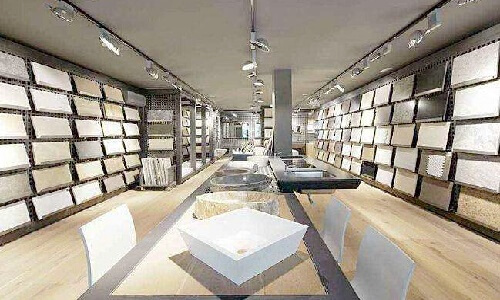
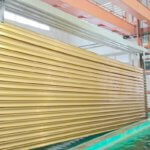

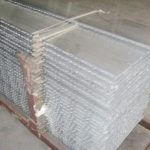
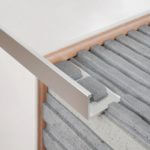
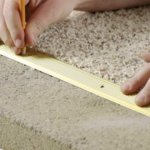
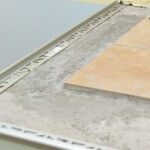





If you would like to grow your experience simply keep visiting
this site and be updated with the most recent information posted here.